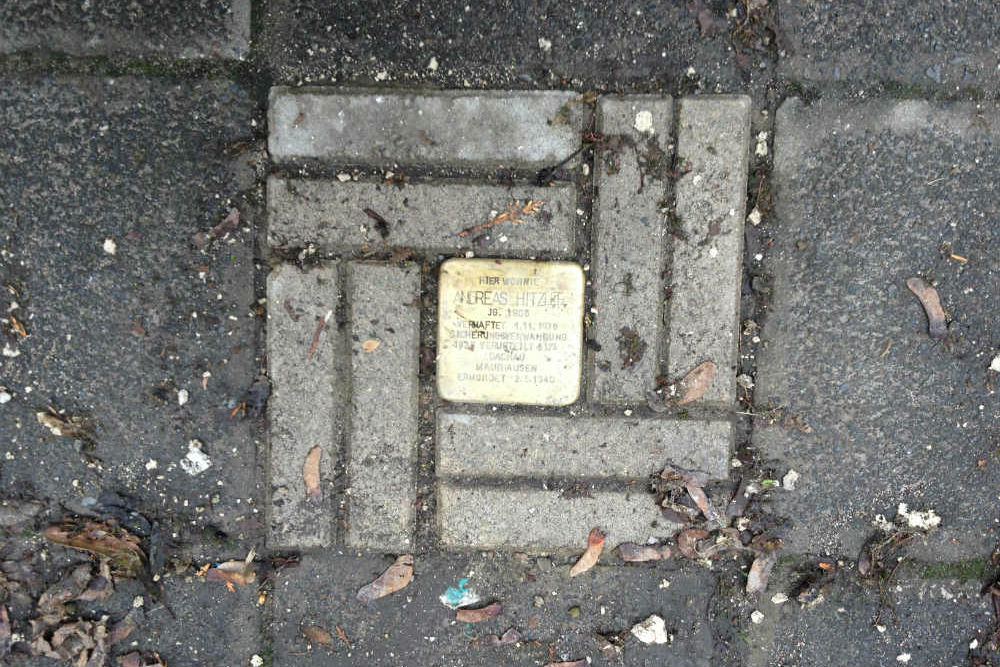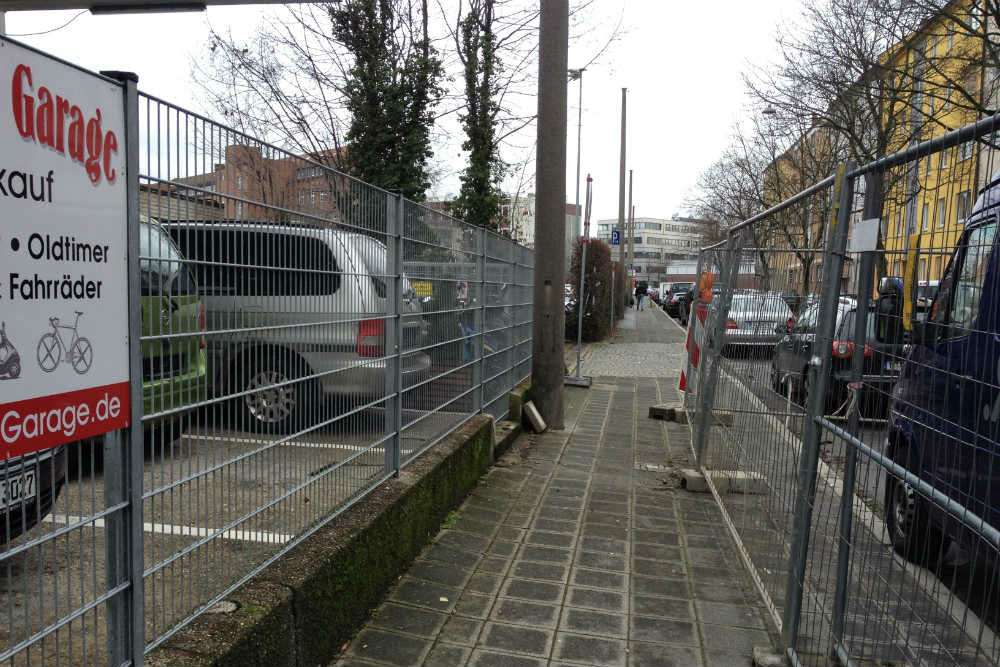Stumbling Stone Seuffertstraße 5
This Stolperstein / Stumbling Stone commemorates:
* Andreas Hitzler, born 1906, arrested 1 November 1936, preventive detention, sentenced in 1937 under §175, Dachau, Mauthausen, murdered 2 May 1940.
In Nürnberg (Nuremberg), the police imposed harsh restrictions on homosexuals in the 1930s. Andreas Hitzler, a bakery assistant, had been arrested in 1929 and was convicted for the first time in 1932 for violating the so called "Gay Paragraph 175" (§175). After a partner named him in a lawsuit, he was arrested again in 1936 and sentenced under §175. Four years later, he died in Mauthausen concentration camp.
Mauthausen camp was formed in 1938 in Austria and its first prisoners were transferred from Dachau. In 1940 it and its subcamp Gusen were classified as camps for incorrigible and asocial prisoners sentenced to the most harsh conditions. The prisoners wore emblems reflecting how the Germans categorized them – such as criminal, political opponent, Jehovah’s witness, etc. A pink triangle was the basic emblem for homosexual prisoners. Emblems could reflect multiple categories. The categories assigned determined how harshly a prisoner was treated and, thus, how long he or she survived.
Prisoners worked in the quarries, providing granite for Hitler’s monumental construction projects. In spite of a lack of skilled laborers, the prisoners were systematically worked to death. In 1942, the top Nazi administration shifted the focus of all concentration camp labor to directly support the war effort. In 1943, Mauthausen began supplying forced labor to Messerschmidt, which manufactured fighter jets.
"Stolpersteine" is an art project for Europe by Gunter Demnig to commemorate victims of National Socialism (Nazism). Stolpersteine (stumbling stones) are small, 10x10cm brass plaques placed in the pavement in front of the last voluntary residence of (mostly Jewish) victims who were murdered by the Nazis. Each plaque is engraved with the victim’s name, date of birth and place (mostly a concentration camp) and date of death. By doing this, Gunter Demnig gives an individual memorial to each victim. One stone, one name, one person. He cites the Talmud: "A human being is forgotten only when his or her name is forgotten."
Do you have more information about this location? Inform us!
Source
- Text: Anne Palmer
- Photos: John Mark Shorack
- Nordbayern 17.10.2017: Neue Stolpersteine
- Mauthausen Memorial
- Stolpersteine.eu
Nearby
Museum
- Museum Deutsche Bahn - Nürnberg
- Germanisches Nationalmuseum - Nürnberg
- Museum Historical Rock-cut Cellars - Nürnberg
Point of interest
- Siemens Factory Nuremberg - Nürnberg
- Neckermann Nuremberg - Nürnberg
- Reichsbahnkantoor Nuremberg - Nürnberg
Monument
- Memorial SDP Victims - Nürnberg
- Memorial Destroyed Synagogue - Nürnberg
- Memorial "Nürnberger Gesetze" - Nürnberg
Cemetery
- German War Graves 1693 - 1919 Nuremberg - Nürnberg
- Collective Grave Franco-Prussian War Fürth - Fürth
- German War Graves Städtischen Friedhof Fürth - Fürth
Remembrance Stone
- Stumbling Stones Melanchthonplatz 1 - Nürnberg
- Stumbling Stone Camerariusstraße 6 - Nürnberg
- Stumbling Stones Celtisstraße 3 - Nürnberg







